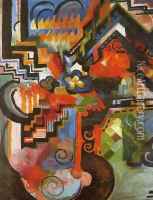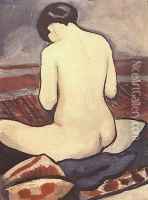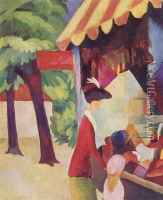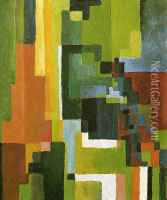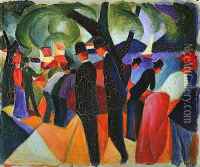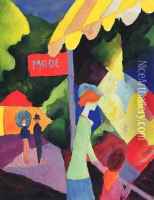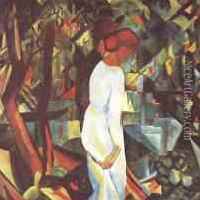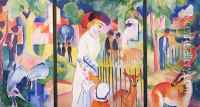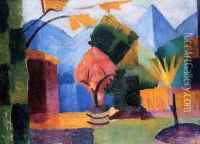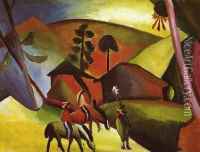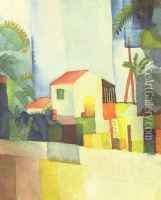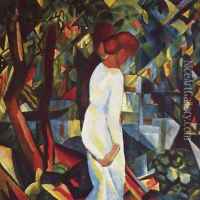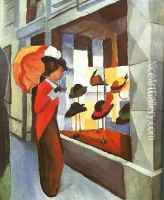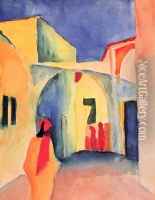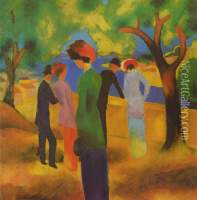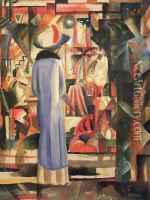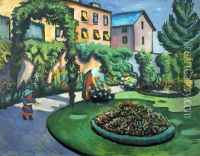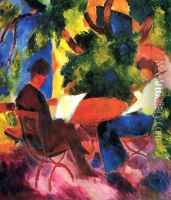August Macke Paintings
August Macke was a German painter, born on January 3, 1887, in Meschede, Germany. He was one of the leading members of the German Expressionist group Der Blaue Reiter (The Blue Rider). Macke developed a style of painting that combined elements of Impressionism, Fauvism, and Cubism with his own sense of color and form, resulting in vibrant and harmonious compositions.
August Macke showed an interest in art from an early age and began his formal art education at the Düsseldorf Academy of Arts in 1904. During his studies, he traveled to Paris, where he was influenced by the work of the Impressionists. After leaving the academy, he moved to Munich in 1907, where he met fellow artists Franz Marc and Wassily Kandinsky, with whom he would later establish Der Blaue Reiter in 1911.
Macke's work is characterized by bright, vivid colors and a simplified approach to form. His paintings often depicted everyday scenes filled with figures, urban landscapes, and still lifes. He had a particular interest in depicting the interactions between people and the harmonious integration of figures into their surroundings.
In 1912, Macke visited Tunisia with fellow artists Paul Klee and Louis Moilliet. The light and color of the North African landscape had a profound impact on his painting style, leading to a series of works that are considered among his best. The use of intense colors and the play of light and shade in these paintings reflect his continuous pursuit of capturing the vibrancy of the world around him.
Tragically, August Macke's life and career were cut short when he was drafted into the German army at the outbreak of World War I. He was killed in action on September 26, 1914, near Perthes-les-Hurlus in Champagne, France, at the age of 27. Despite his brief career, Macke left behind a substantial body of work that continues to be celebrated for its contribution to modern art and for its influence on the development of Expressionism.
